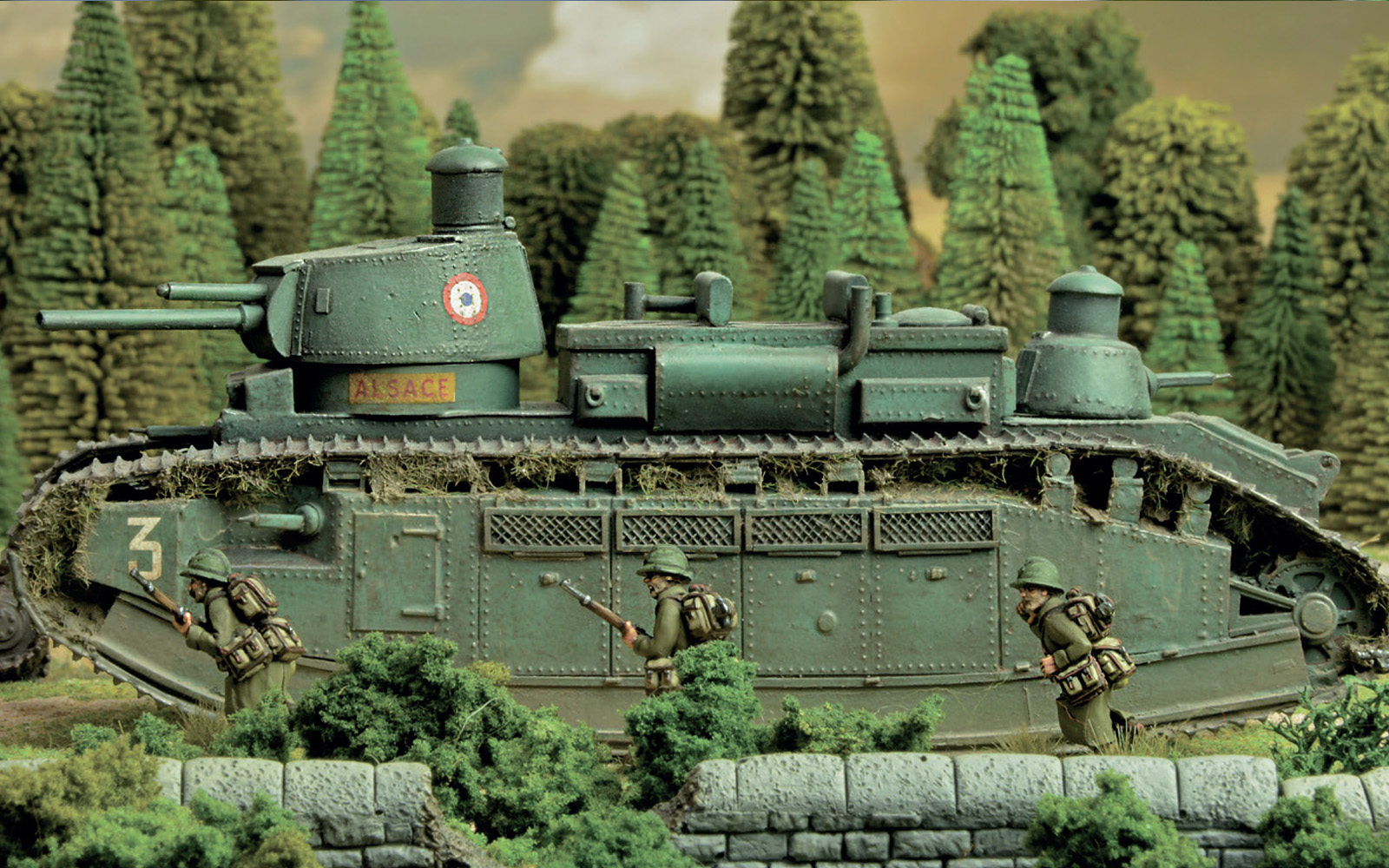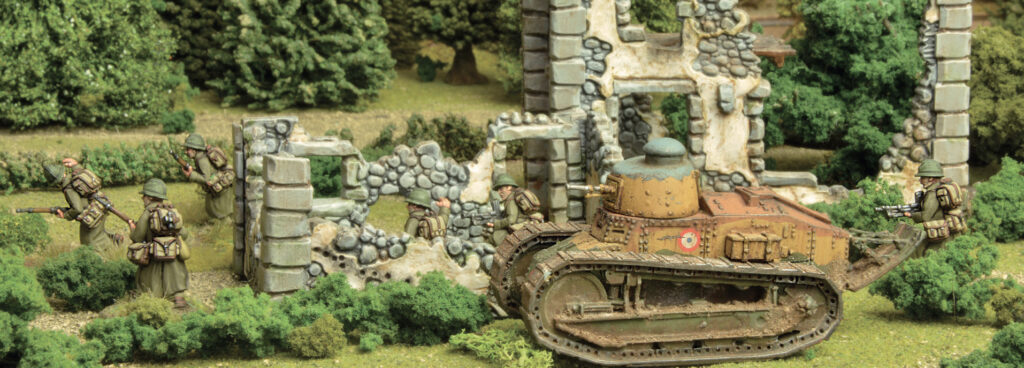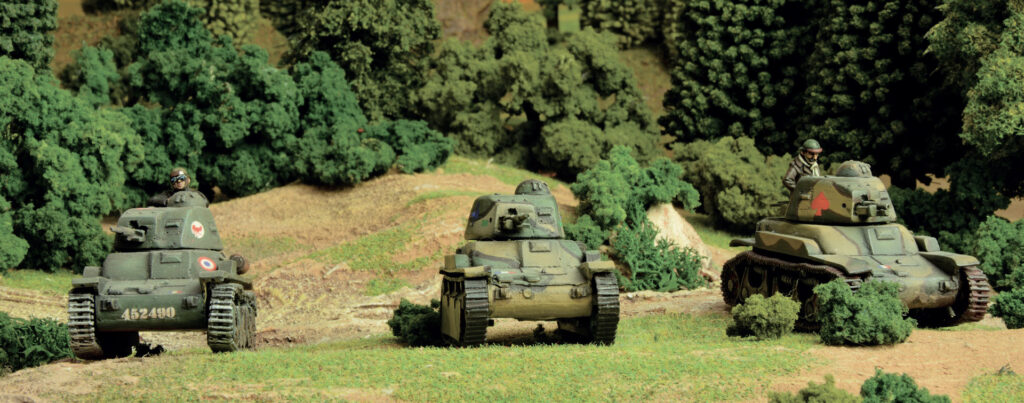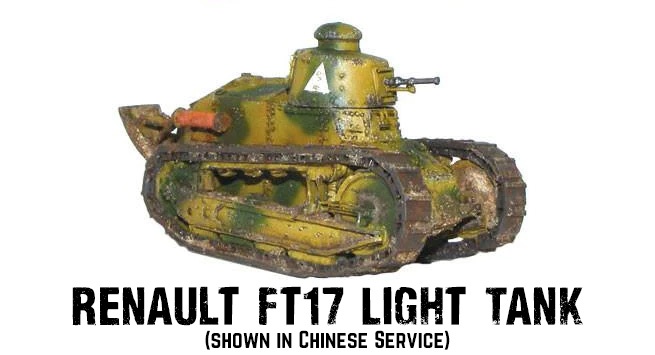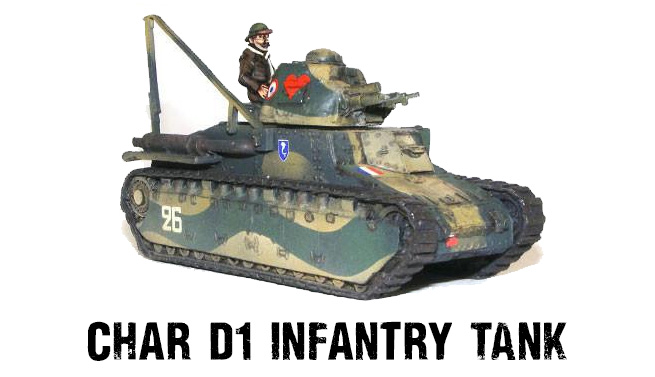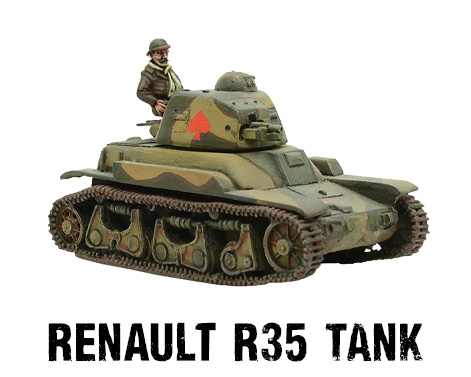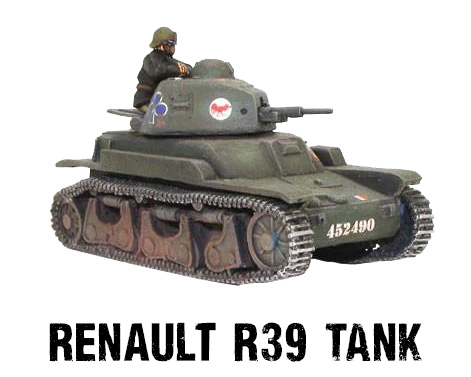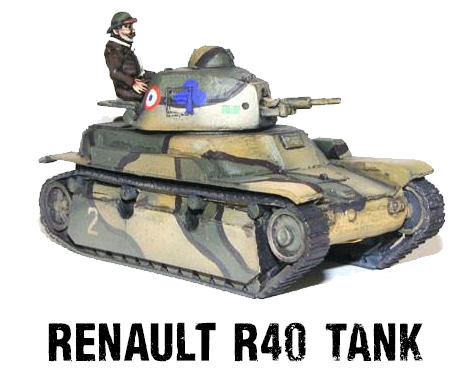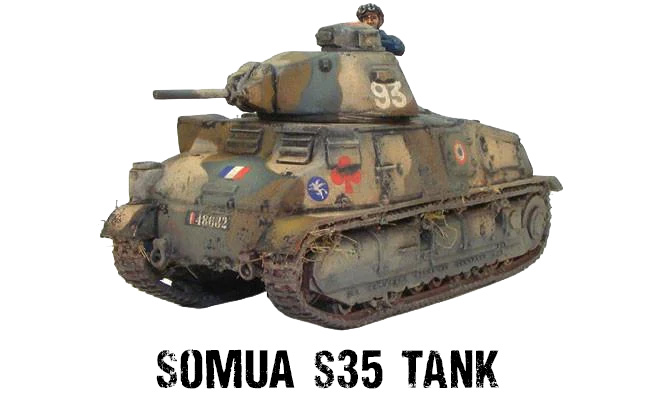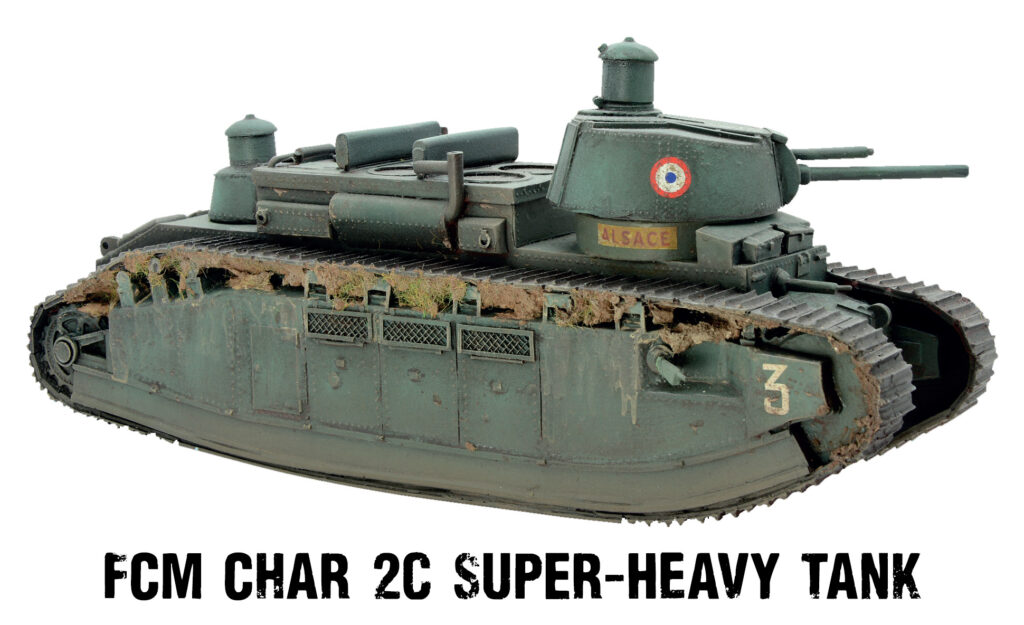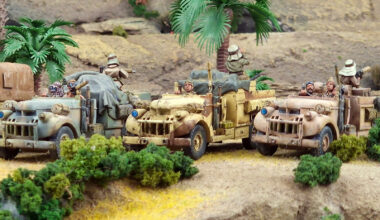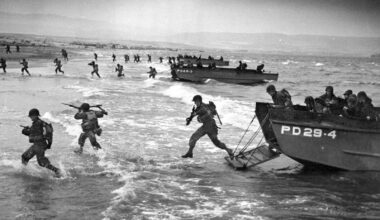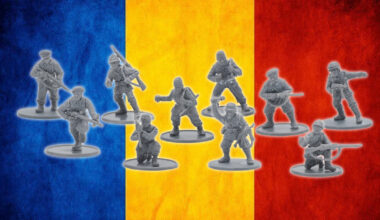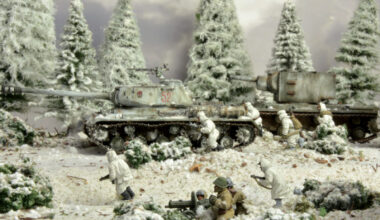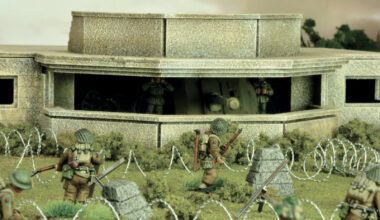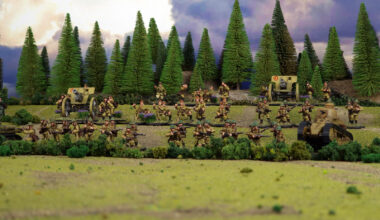We’ve talked a lot in recent weeks about all the options the brand-new plastic French Infantry boxed set gives Bolt Action commanders, and with good reason – it’s an awesome kit! However, the French Army wasn’t just made up of infantrymen (although there were loads of them!) – there were plenty of armoured vehicles as well! While French tanks get some bad press, they actually aren’t as bad as some people would have you think, especially on the Bolt Action tabletop. Let’s have a look!
Historically, French armour development was a bit of a confused beast. With a well-established and modern automotive industry and a significant military budget, France was well-placed to design and produce tanks, and in the First World War had developed the Renault FT, the world’s first ‘modern’ tank in terms of layout. Like the vast majority of nations, however, they ended up down some weird and wonderful rabbit holes in the interwar period, and would enter the war with a series of designs that varied from excellent in theory but poor in practice to simply a little confusing, and there was never really enough of any one type to go around. Nevertheless, French tankers served bravely, and in Bolt Action some of their machines can be surprisingly effective when used correctly. Let’s have a look at the greatest hits! For sanity’s sake, I’m only going to discuss early-war vehicles here – no Shermans or captured Panthers, which have already been discussed at length elsewhere.
We’ll start with the aforementioned first of the ‘modern’ tanks, the venerable Renault FT – often brought up as something of a joke vehicle, but actually surprisingly effective if you understand its capabilities and limitations. At 35 points for Regular, it’s one of the most cost-effective ways to get a medium machine gun onto the table, and in a 7+ Damage Value box to boot! Don’t rely on it to actually go anywhere (the One-man Turret and Slow… Pitifully Slow special rules make it almost immobile in most cases), but it’s a useful little armoured pillbox, especially if you’re bringing your anti-tank firepower in other forms!
Moving onto the ‘real’ tanks, we’ll start with the Char D1 (Char in this case being a contraction of Char d’assault, loosely ‘combat car’). Designed to replace the FT as a light infantry support tank, it was a surprisingly modern concept, pairing an excellent (for the time) 47mm anti-tank gun with a pair of medium machine guns and reasonably thick armour. Unfortunately, it was also underpowered and mechanically unreliable, and this led to it being mostly relegated to reserve duties by the outbreak of war. On the tabletop, it’s not a bad machine to have, especially in the early war, pairing a useful light anti-tank gun with a brace of MMGs in a DV 8+ hull – pretty much the standard for tanks at the outbreak of hostilities. Although it suffers from the traditional French complaints of Slow and One-man Turret, it’s reasonably inexpensive at 115 points for Regular, which allows you to cram plenty more goodies into your army, and provides thoroughly acceptable firepower for the early war.
Next up we have the Renault R-series – three tanks using the same profile! These were the most numerous of the French Army’s modern tanks, and were intended to be ‘light’ tanks – however, in true French fashion, they actually came out rather slow and heavy! The initial R35 was armed with the antique SA18 37mm gun, which suffered from an extremely low muzzle velocity, but was well-armoured and reasonably rugged. It would be equipped with a much more modern gun as the R39, and the suspension would be upgraded and a radio fitted for the R40. However, these upgrades and new production of R40s were still underway at the outbreak of war, and many of the older R35s would see combat service. On the tabletop they have the pretty classic set of French special rules (Slow, One-man Turret, notice a theme? –ed.) and a light anti-tank gun (with the Low Velocity rule for the earlier models), but are also Armoured All Round which makes their 8+ Damage Value a little more survivable – never a bad thing! At 120 points for a Regular early model or 130 for the later upgraded version, it’s a nice option that’s a bit more survivable than a D1, and with three awesome models available can be tailored to the early, middle, or later part of the French campaign, allowing you to make your force properly ‘themed’.
Moving onto (slightly) heavier fare, we have the Somua S35. A modern and for the time well-armoured design, it was one of the best tanks available to French commanders at the outbreak of the war, and technically capable of dealing with all of the German armour that it would face during the Battle of France. Boasting impressively thick frontal armour, a good engine, and a serviceable main gun, it was in theory an excellent machine to oppose the Panzer divisions. Unfortunately, it shared a common turret with a number of other designs, which was well-protected but an absolute nightmare for its commander. Cramped and awkward, there was only room for one man, which meant the commander would have to try and do more or less every job in the turret at once, and to make matters worse it also lacked a top hatch. This severely hampered the tank’s overall effectiveness, but thankfully in Bolt Action One-man Turret isn’t the end of the world, particularly when it’s balanced out by Improved Front Armour, effectively making the S35 a 9+ DV from the front – not bad at all for 135 points at Regular!
With the S35 rounding up the classic French ‘light tank, light AT gun’ brigade, we move on to bigger things. We’ve talked about the famous Char B1 at length, but if you’re anything like me, you won’t count it as a ‘big’ tank – it’s practically tiny! Now, the Char 2C… there’s a big tank! Something of a hangover from the interwar ‘landship’ era of tank development, the 2C weighed in at a monstrous 69 tons, and was over thirty feet in length! Crewed by a dozen men, and armed with a turret-mounted 75mm howitzer alongside a quartet of MMGs, it was thickly armoured but (unsurprisingly) rather sluggish. Only ten would be built, one of which (‘Lorraine’) was up-armoured and served as a command vehicle, and all would be destroyed to prevent them falling into German hands during the Fall of France, having never seen combat. Luckily for us, Bolt Action allows us to deploy them and see what might have been if they had reached the front lines! At 190 points for Regular, the 2C is actually not a bad option at all to sit in your tank slot, particularly given how much anti-infantry firepower it can put out, and as a ‘true’ Medium tank with a 9+ Damage Value it’s plenty durable for the early war. If you really want to push the boat out, for 105 points more you can field ‘Lorraine’, which gets Command Vehicle as well as becoming a Heavy with a 10+ DV, which early war armies will really struggle with – just watch out for marauding ‘88s’!
So there you have it – French armour isn’t bad, it’s just misunderstood, especially where Bolt Action is concerned. Get out there and put the myth to rest (preferably by grinding your opponents to dust beneath the treads of a Char 2C)!
